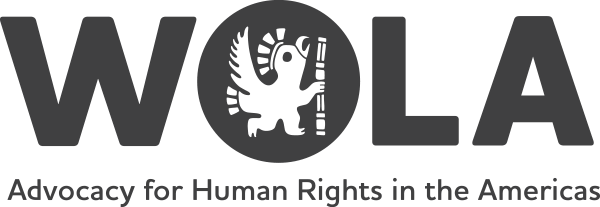Colombia Threat Update
In what has been dubbed “Black September,” over 150 death threats have been issued in the month of September against Colombian human rights defenders, journalists, and labor leaders. These events require immediate action on behalf of the Colombian government. U.S. officials should encourage their Colombian counterparts to act to guarantee that these threats do not translate into murders and to investigate the material and intellectual authors behind these threats and attacks.
The threats include:
• On September 29, Afro-Colombian community leader Claudia Mondragon received a death threat from the paramilitary nicknamed “El Coquito;” Mondragon had just returned to the Humanitarian Space in Buenaventura a day earlier after having left because of death threats.
• Students at the University of the Valle del Cauca received death threats on September 23 from the Águilas Negras paramilitary successor group, apparently for their work in organizing the National Congress of University Students. The UN High Commissioner for Human Rights also denounced this incident, and called on the civil and police authorities to provide protection measures to the student leaders, as well as pursue complete investigations that conclude with prosecutions of those responsible.
• A group of prominent Colombian human rights defenders received a death threat from the Rastrojos paramilitary successor group, who left pamphlet at the offices of the Redepaz human rights NGO offices. The document identified the analysts Leon Valencia and Ariel Avila, as well as as a “military objectives”, and included another seven human rights defenders. Also targeted were Fernando Hernandez, director of Corporación Nuevo Arco Iris think tank; Julio Roberto Gomez, the director of the CGT labor federation; Luis Emil Sanabria, the director of the REDEPAZ NGO; Jesus Mario Corrales, president of the Nuevo Amanecer foundation; Leonel Narvaez Gomez, president of the Foundation for Reconciliation; the Director of Corporación Viva la Ciudadanía Antonio Madariaga; and Marco Romero, Director of the Consultancy for Human Rights and Displacement (CODHES). They noted that every time they are investigating an issue such as land or displacement, they receive similar threats, but never when investigating the FARC or ELN.
• The USO oil sector union has come under threat recently, as numerous unknown people have approached USO members and local residents in the Puerto Boyacá area. On September 20, two people on a motorcycle with helmets completely covering their faces, waited outside the house of Magdalena Medio Associate Director of the USO Wilfredo Pena Serrano. This comes after multiple similar incidents in August, where unknown men went to the house of Mr. Pena asking where he was in a suspicious manner. The USO asks that the Attorney General investigate these incidents and that the Ministry of Labor take action to guarantee the safety of those threatened.
•Despite multiple requests for adequate protection, Father Alberto Franco of the Inter-Church Commission for Justice and Peace did not receive adequate protection measures for his trip to Cali. This lack of protection for travel outside of Bogota—where many defenders are at greater risk—is unacceptable, and the denial of protection constitutes the effective lack of guarantees for defenders to continue their work.
• In a threat dated September 29, the Urabenos threatened eight Colombia journalists for their work covering the capture of the paramilitary known as La Chili, who, according to authorities, was responsible for the chop-up houses who fled to Chile and was extradited back to Colombia. The journalists—Henry Ramirez, Cristian Abadia, Girldardo Arango, Yesid Toro, Dario Gomez, ‘El Negro’ Mina, Oscar Gutierrez and Julio Cesar Bonilla—were given 24 hours to leave Buenaventura and Cali or would be killed. According to a new report from Reporters without Borders, Colombia is—for the fourth year in a row—one of the worst countries in the world in terms of press freedom.
• Francia Marquez, Afro-Colombian community leader in La Toma in Northern Cauca, came under grave threat on September 28, when it became known that two men were in the community looking for Lisifrey Ararat and Ms. Marquez with the goal of assassinating them. It was believed that the planned attack was called for by the miner known as “El Indio;” Ms. Marquez is a well-known activist for the rights of the Afro-Colombian communities in this region whose land has been damaged by illegal mining interests. Taking into account a past death threat in June of this year which threatened to kill Ms. Marquez and her children, she decided to leave her community.
• Human rights defender and member of the Victims Table in Antioquia Jonatan Echeverri was attacked on October 1. At least nine shots were fired at his vehicle by two hitmen, though he escaped unharmed. Investigations are underway to identify who was behind the attack.
